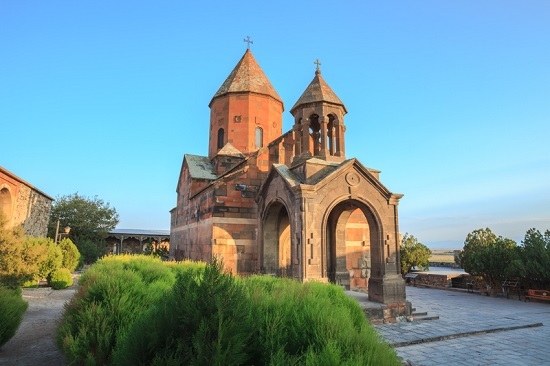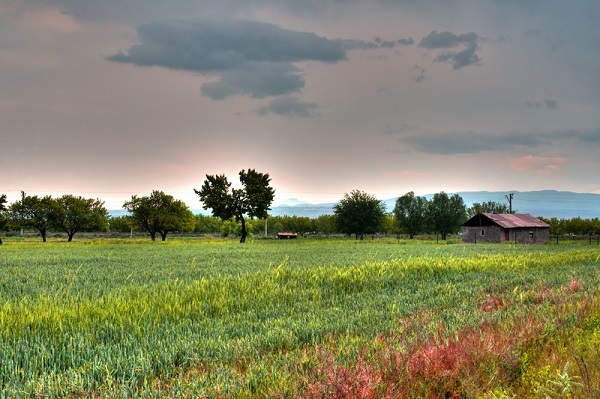

Artashat, a city that once stood proud and mighty, now lies in ruins, but its legacy lives on. The city, located near the Arax River in present-day Armenia served as the capital of the Kingdom of Armenia for several centuries. The city's rich history, culture and art, and diverse population made it a melting pot of different customs and traditions.

Khor Virap (citadel), Artashat
Description-Khor Virap is an Armenian monastery located in the Ararat Plain in Armenia, near the border with Turkey
The name “Artashat” is derived from the Armenian words “Arta” and “shat,” which together mean “pleasure” and “city,” respectively. The name “Artashat” also has a deeper meaning, as it symbolizes the idea of a city that brings pleasure and joy to its inhabitants, a place where people can live in harmony and prosperity. The king's name, Artashes, is also derived from the same root word “Arta”, thus the name of the city and the king are connected.
Founded by King Artashes I in 176 BC, the city quickly became the capital of the Kingdom of Armenia and a centre of trade, culture, and architectural grandeur. The city was designed to showcase the wealth and power of the kingdom and was a hub of activity and prosperity. However, in the 3rd century AD, the Sassanid Persian Empire destroyed the city, leaving it in ruins.
Artashat is located near the Arax River in present-day Armenia. The area is characterized by its semi-arid climate with long, hot summers and short, mild winters. The surrounding landscape is mostly hilly and rocky, with the city itself located on a plain. The nearby Mt. Ararat, which is the highest mountain in the region, can be seen from the city. The city was surrounded by fertile land, which allowed for agriculture and animal husbandry.

The demographics of Artashat, during its time as a city, would have been diverse, with a mix of different ethnic groups and cultures. The population would have primarily been made up of ancient Armenians, but there would also have been a significant number of traders, merchants, and artisans from various neighbouring regions and empires such as the Persians and the Greeks.
Artashat, as the capital of the Kingdom of Armenia, was a centre of culture and arts. The city was known for its impressive architecture, including palaces, temples, and public buildings that showcased the wealth and power of the kingdom. The city was also a hub of trade and commerce, which brought in a diverse group of people, and this diversity is reflected in the city's art and culture. It was a melting pot of different customs and traditions, and this diversity is reflected in the city's art, culture, and architecture.
Transportation in ancient Artashat would have been primarily by foot and on horseback. The city's location on the historical Silk Road trade route would have made it a hub of activity and commerce, with merchants and traders travelling to and from the city on foot and horseback. The city's proximity to the Arax River would have also made water transportation an important means of moving goods and people. River transport would have been mainly carried out by boats, which would have been used to transport goods and people across the river.
The economy of ancient Artashat would have been primarily based on trade and commerce. The city's location on the historical Silk Road trade route would have made it a hub of activity and commerce, with merchants and traders coming to the city to buy and sell goods. Agriculture and animal husbandry would have also been significant to the city's economy, as the surrounding area is fertile. The city would have had a thriving handicraft industry, with artisans producing goods such as pottery, textiles, and metalwork.
Education in ancient Artashat would have been primarily focused on preparing individuals for their roles in society. The city would have had schools and academies where children and young adults could learn reading, writing, mathematics, and other skills necessary for trade, commerce, and government. Education in the arts and sciences would have also been available for those who could afford it. The city would have been home to many scholars and philosophers, who would have played an important role in passing on the knowledge and culture of the civilization.
Sports and physical activities would have been a significant aspect of life in ancient Artashat. The city would have had facilities for various sports such as wrestling, archery, and horseback riding, as well as open spaces where people could engage in other physical activities like running and jumping. The city would have also held competitions and tournaments in these sports, and athletic skills would have been highly valued.
Clamart in France
Pestszentlőrinc-Pestszentimre (Budapest) in Hungary
Artashat was a city that left an indelible mark on history. The city's legacy lives on through its art, culture, and history, and it serves as a reminder of the grandeur and prosperity that once was. The city's legacy will always be a source of inspiration for generations to come.
Q1. What are the most notable architectural sites of Artashat?
Ans. The statue of Artashes 1st, the Armenian king, is the most notable monument of Artashat. Khor Virap, the citadel built by King Artashes is also popular.
Q2. How old is Artashat?
Ans. Artashat served as the capital of Armenia in around 185 BC. Sources suggest it was founded in 176 BC.
Q3. What are the titles given to Artashat?
Ans. Artashat was known as the ‘Vostan Hayots’ popularly. “Seal of the Armenians’, ‘court city’, and; Armenian royal residence’ were the other titles endowed to Artashat.